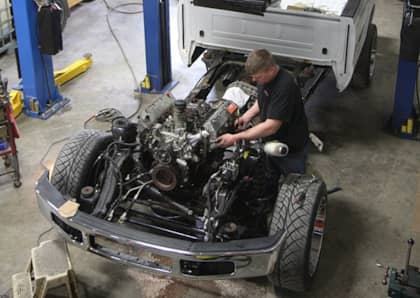How Diesel Emission Systems Work
It’s been 56 years since the Clean Air Act was passed, but the last half of those years have been the busiest for diesel engines. Beginning in 1991, more stringent federal emission standards were introduced to get engine manufacturers to cut down on particulate matter (PM). By 1994, a further 60-percent reduction in PM was made mandatory. Then in 1998, stricter limits on nitrogen oxides (NOx) were imposed, with maximum limits set to gradually tighten up. The next crackdown on NOx emissions came in 2004, prompting Ford to debut its Navistar-built 6.0L Power Stroke with exhaust gas recirculation (EGR) and GM to add EGR to the 6.6L Duramax.
As of January 1, 2007, PM emission limits were lowered once more, this time to 0.01 g/bhp-hr—a 96-percent reduction from the 1991 standard. At the same time, manufacturers had to meet a NOx level that was 90-percent lower than the standard that had just taken effect in 2004, although it didn’t take effect immediately. Manufacturers were allowed to use the period from 2007 to 2010 as a phase-in period for the new, extremely stringent NOx standard. As a result, Ford and GM both waited until 2010 to meet the standard, which required the use of selective catalytic reduction (SCR), and that Ford and GM debuted on the new 6.7L Power Stroke and LML Duramax (launched as 2011 models).
To meet the ever-increasing regulations mentioned above, a plethora of pollution-combatting technology has been employed. In the early days (1990s), changing piston designs, altering injector spray angle or switching to electronically controlled injection systems helped curb a lot of emissions, but not all of them. As a result, higher injection pressures and especially high-pressure common-rail systems were turned to in order to meet PM requirements. Then came the aforementioned EGR systems, which helped drop NOx levels. Further PM and NOx-fighting technologies such as the diesel oxidation catalyst (DOC), diesel particulate filter (DPF), active and passive regeneration, selective catalytic reduction (SCR) and diesel exhaust fluid (DEF) were soon to follow.
Confused by all the fancy acronyms? Scroll down to find exactly what they mean and how they function.
Particulate Matter (PM)
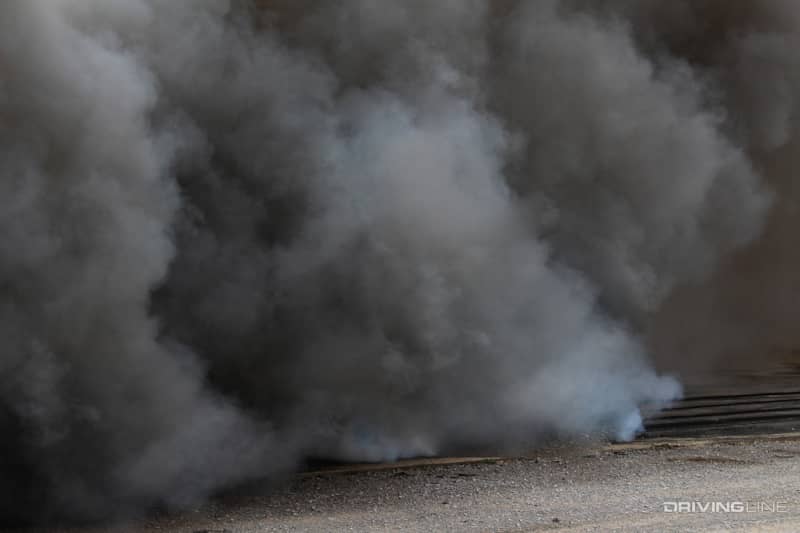
The first pollutant on the EPA’s radar was particulate matter (PM). In a diesel engine, PM is the result of unburned fuel, as in fuel that isn’t completely used during the combustion process and is allowed leave the cylinder through the exhaust valves, flow through the exhaust system and out the tail pipe in the form of black smoke. Mechanical (i.e. older) fuel systems with less precise injection events occurring in-cylinder were notorious for producing PM. PM itself is a complex makeup of sulphates, carcinogenic compounds, elemental carbon and heavy metals.
Nitrogen Oxides (NOx)

Nitrogen oxides (NOx) are a direct result of the high operating temperatures diesels are capable of and are a primary ingredient in smog. They form when nitrogen is released during combustion and conjoined with oxygen. Various oxides of nitrogen are produced when extreme in-cylinder heat is present, namely nitrogen dioxide and nitric oxide, which means a fine balance between NOx (achieved with lower in-cylinder temps) and PM (achieved with complete combustion/high in-cylinder temps) is paramount if a modern diesel engine is to keep both pollutants at reasonable levels.
Exhaust Gas Recirculation (EGR)
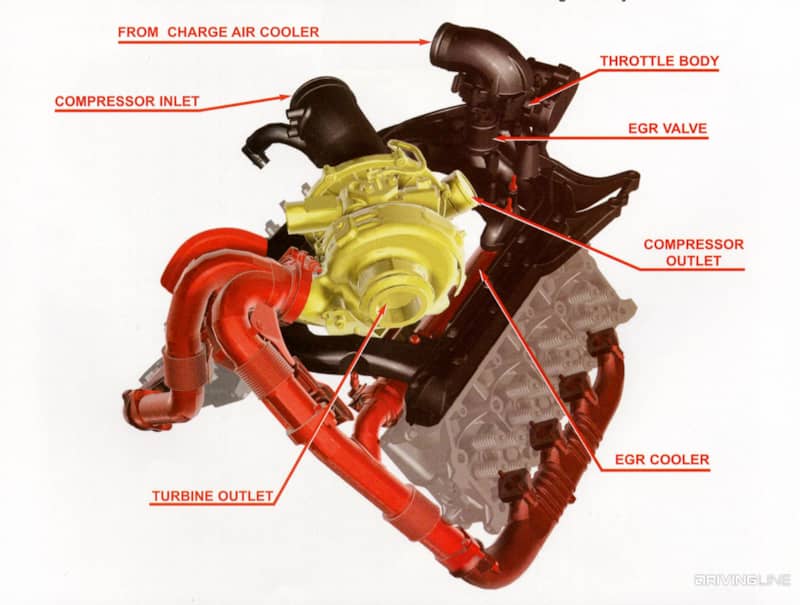
In the early 2000s, PM standards were met through the use of electronically controlled injection systems and higher in-cylinder injection pressures. However, the higher combustion temperatures resulting from controlling PM are counteractive to controlling NOx. To cool in-cylinder combustion temps and reduce NOx, high-pressure loop exhaust gas recirculation quickly became the norm. Being that EGR gases are almost completely depleted of all oxygen content, the engine is denied the oxygen atoms required to facilitate the development of NOx.
EGR Valve
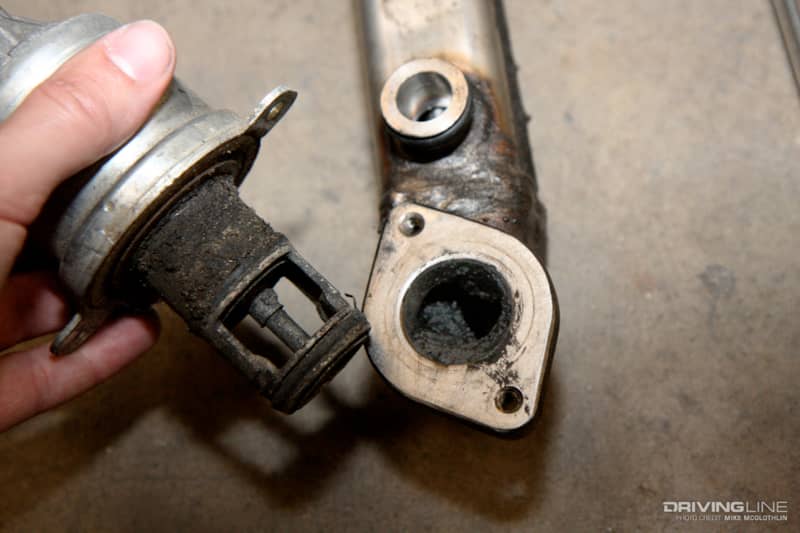
The component responsible for controlling the flow rate of exhaust gases destined to reenter the intake stream is the EGR valve. There are two types of EGR valves, cold-side and hot-side, and the type of activation varies from pneumatically to hydraulically to electrically (the latter being most common today). Cold-side EGR valves direct exhaust gases into the intake after they’ve left the EGR cooler(s). A hot-side EGR valve performs its flow duties before the EGR cooler(s). Use of a hot-side EGR valve is believed to help cut down on the kind of soot and grime buildup that leads to valve failure (i.e. sticking).
EGR Cooler
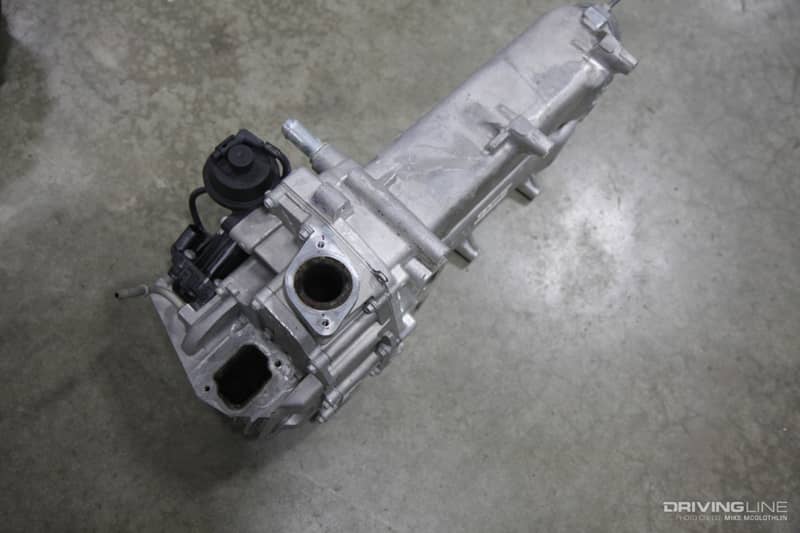
With exhaust gas temperatures exceeding 1,200 degrees F in most engine applications, the portion of exhaust gases being routed back to the intake tract have to be cooled. The job of dropping these temperatures is handled by the EGR cooler. An air-to-liquid heat exchanger, the EGR cooler uses circulated engine coolant to lower the temperature of the exhaust gases passing through it. On engines such as the 6.4L Power Stroke and 6.7L Power Stroke, there are two EGR coolers at work.
Diesel Particulate Filter (DPF)
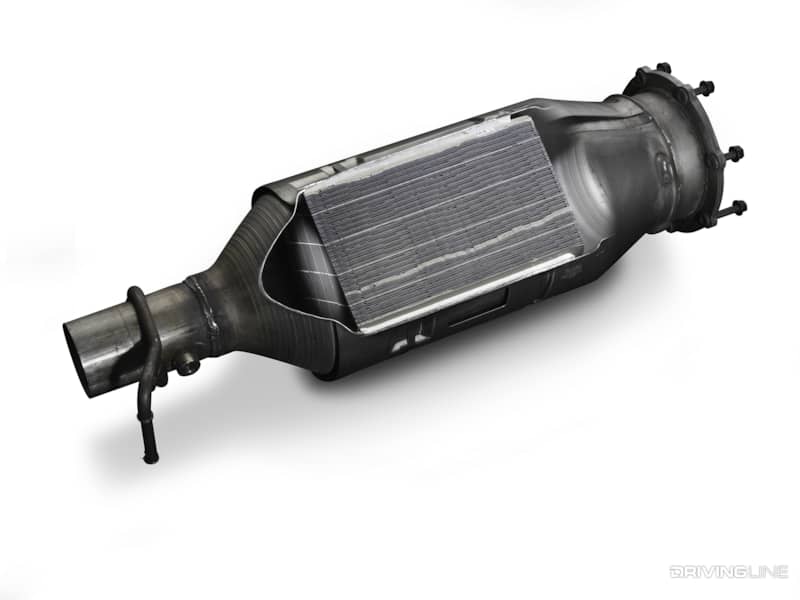
When the federal government tightened the noose around PM emissions in 2007, not even the maximized efforts of high-pressure common-rail injection were efficient enough to meet the new standard. This led to the modern exhaust aftertreatment systems we know today. At the heart of the aftertreatment system is the wall-flow style catalyst known as the diesel particulate filter (DPF). Its primary function is to keep PM from exiting the tailpipe by storing it. The soot collected by the DPF periodically triggers a regeneration cycle (more on that below), which involves the combination of diesel fuel and exhaust gases within the diesel oxidation catalyst (DOC) transforming the soot into a fine ash. While DPF’s have proven very effective, they do require occasional cleaning and eventual replacement.
Diesel Oxidation Catalyst (DOC)
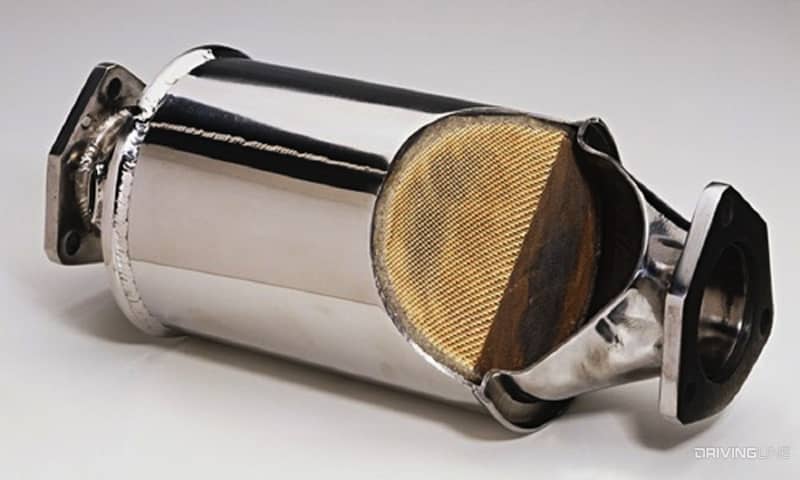
In modern diesel exhaust aftertreatment systems, the DOC’s job is to provide the extreme heat that’s necessary to convert soot accumulation into the fine ash that remains trapped in the DPF. By oxidizing diesel fuel supplied to it from the engine, the DOC provides the means of increasing DPF temperature, which effectively incinerates the soot buildup within the DPF, breaking the soot down into the finer, noncombustible particles (i.e. ash) that remain.
DPF Regeneration
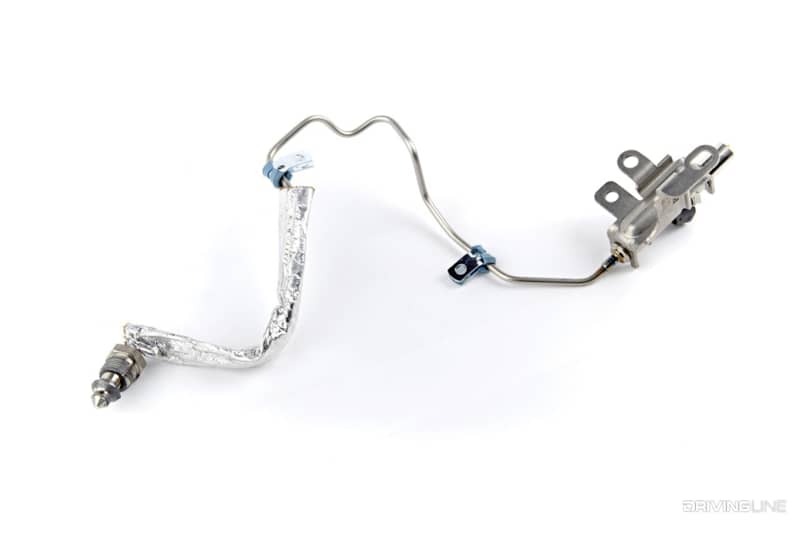
At a predetermined level of soot accumulation (usually triggered by pressure differential across the DPF), the DPF regeneration process is initiated to convert soot into ash. During this active regeneration cycle, fuel is introduced into the DOC. The diesel fuel comes by way of excess fuel being injected on the engine’s exhaust stroke (example: ’08-’10 6.4L Power Stroke) or through a downstream ninth fuel injector (example shown above: ’11-’16 LML Duramax). During regeneration, the combination of fuel being introduced to the DOC and retarded injection timing taking place in-cylinder causes exhaust gas temperature to climb higher than 1,000 degrees F.
Selective Catalytic Reduction (SCR)
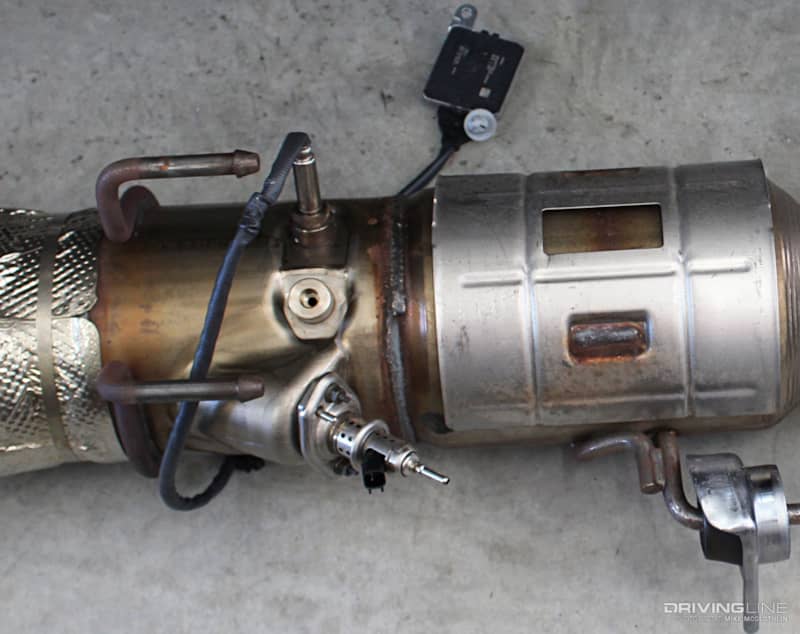
Going beyond what EGR systems are capable of, SCR has become the most effective technology in getting NOx levels low enough to meet the current, stringent standard. The NOx problem that can’t be solved in-cylinder is dealt with in the exhaust aftertreatment system by injecting urea-based diesel exhaust fluid (DEF) upstream of an SCR catalyst. During this process, harmful NOx is chemically converted in harmless nitrogen.
Diesel Exhaust Fluid (DEF)
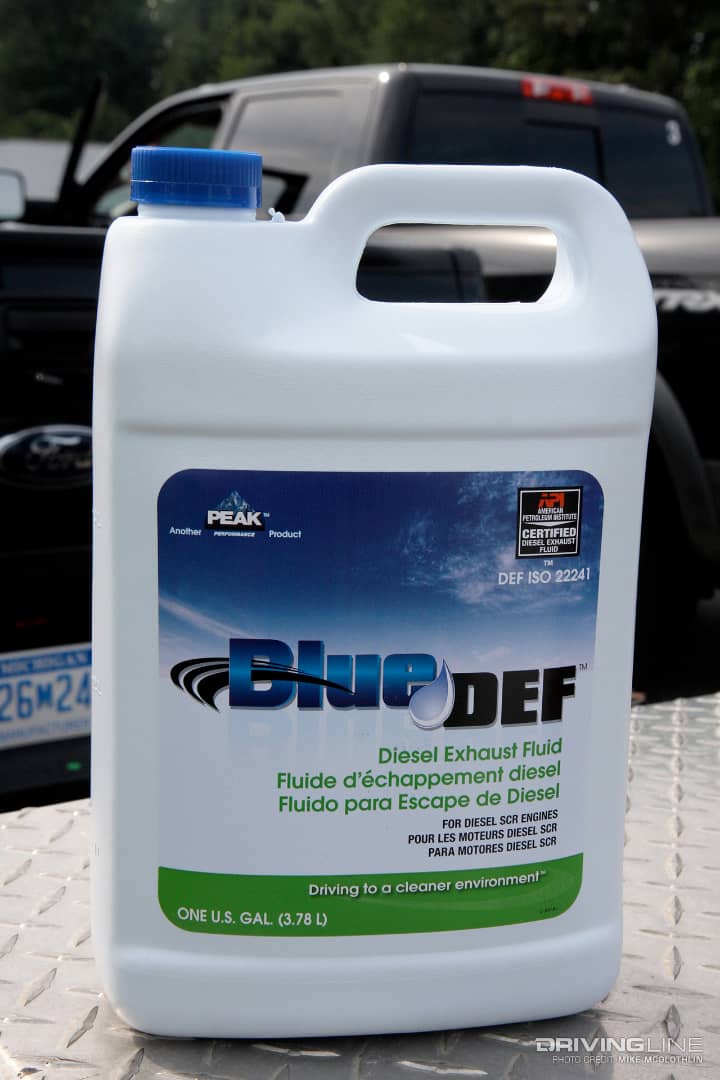
Although it must be carefully blended, the chemical makeup of DEF is pretty simple: 32.5-percent high purity urea and 67.5-percent deionized water. Urea itself is a nitrogenous compound that turns to ammonia when exposed to heat. Ammonia, along with the SCR catalyst, is paramount in converting NOx into nitrogen. The upside to SCR is that a more efficient combustion process can be employed in-cylinder without the NOx produced as a result of it being a problem or overtaxing the EGR system. SCR’s downside is further complexity within the diesel exhaust aftertreatment system and the fact that DEF freezes before diesel fuel does. The latter is the reason behind all SCR systems featuring DEF heaters, as well as DEF’s chemical makeup of exactly 32.5-percent urea (a ratio that provides the lowest possible freeze point of 12 degrees F).
Variable Geometry Turbocharger (VGT)
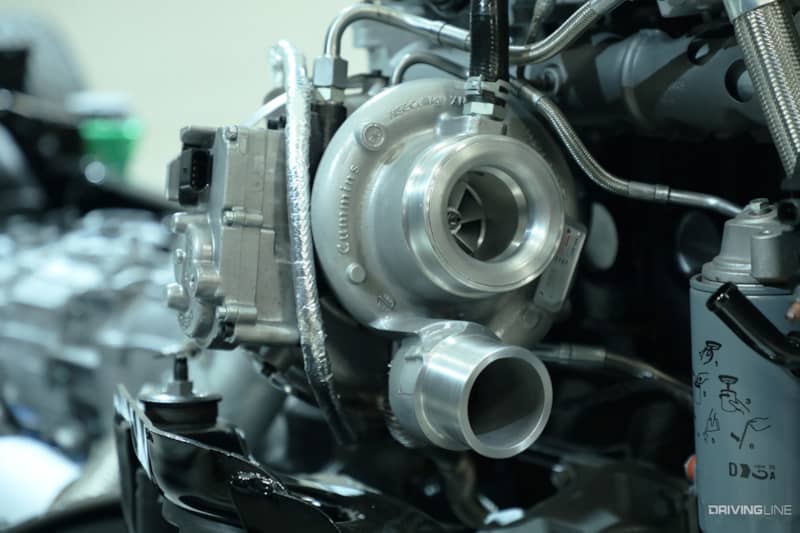
Believe it or not, VGT’s are a necessary part of curbing both PM and NOx emissions. By acting like a smaller, more restrictive turbo at low rpm, its transient response is unmatched by any other type of turbo. This responsiveness means that the engine is kept in the meat of its power band, where fuel is more efficiently burned and instances of being “under the charger” (where a puff of smoke leaves the tail pipe) are eliminated. As it pertains to the EGR system, the VGT assures that positive pressure exists between the exhaust and intake manifold(s) so that sufficient EGR flow is available when it’s required.
Curious about the ins and outs of your EGR system? Find out all the dirty details here.





